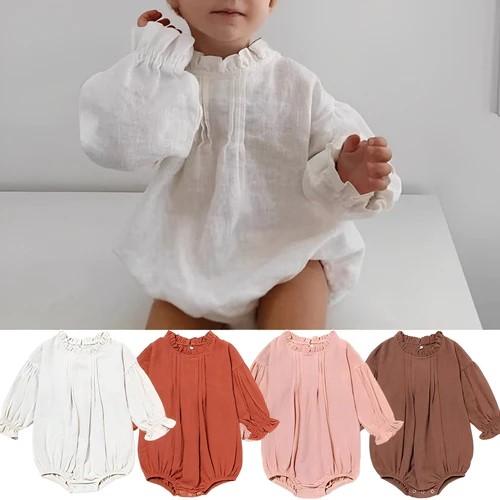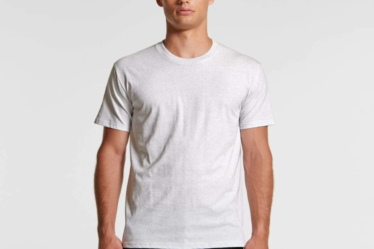
Choosing proper newborn baby wear is one of the first tasks new parents face. Infants’ swift and continual growth often leaves parents wondering how to select comfortable and practical sizes.
This article delves into understanding newborn baby wear sizes and how to align them with your baby’s growth stages.
The Basics of Newborn Clothing Sizes
Newborn baby clothing sizes are categorized by age, weight, and height. Typical size labels include “newborn” (NB), “0-3 months,” “3-6 months,” and so on.
These sizes are meant to be approximate and can vary slightly between brands. For newborns, clothes labeled as “NB” usually fit babies weighing up to 8 pounds and measuring up to 21 inches in length.
The Importance of Growth Stages
Babies grow rapidly during their first year, with significant changes happening within the first few months. This rapid growth means that a clothing size might fit for only a short period before your baby moves on to the next size range.
To prepare for this growth, it’s helpful to understand the different stages:
- 0-3 Months: During this stage, babies grow out of their “NB” clothes and transition into “0-3 months” sizes. These clothes fit babies weighing 8-12 pounds and measuring 21-24 inches in length.
- 3-6 Months: As your baby’s growth slows slightly, they’ll likely wear “3-6 months” clothing. This size typically fits babies weighing 12-16 pounds and measuring 24-26 inches.
- 6-9 Months: At this stage, clothing sizes reflect weights of 16-20 pounds and lengths of 26-28 inches.
- 9-12 Months: By the end of their first year, many babies wear “9-12 months” sizes, designed for weights of 20-24 pounds and lengths of 28-30 inches.
These guidelines are averages, and your baby’s growth may differ. Regularly measuring your baby’s height and weight can help ensure a proper fit.
Tips for Choosing the Right Size
- Opt for Slightly Larger Sizes: Since babies grow quickly, it is better to choose clothing that is one size larger than your baby’s current measurements. Loose-fitting clothes also provide more comfort and ease of movement.
- Check Sizing Charts: Different brands have their own sizing standards. Always check and choose according to the brand’s size chart to ensure the best fit.
- Consider Fabric Stretch: Cotton and other stretchy materials can accommodate growth better than rigid fabrics. Look for clothes with elastic waists and adjustable closures.
- Account for Layering: If you live in a cooler climate or during winter months, consider that you may need to layer clothing. This might require slightly larger sizes to fit comfortably over other layers.
- Evaluate Fit Regularly: Babies outgrow their clothes quickly. Check regularly for signs that an outfit has become too small, such as tightness around the neck, arms, or legs.
Must-Have Newborn Clothing Items
To ensure your baby is comfortable and well-dressed for all occasions, stock up on the following essentials:
- Onesies: These are versatile and easy to layer. Choose onesies in various sizes to keep up with growth spurts.
- Sleepers: Full-body outfits with snaps or zippers are ideal for bedtime and provide full coverage.
- Swaddle Blankets: While not technically clothing, swaddles help keep your baby cozy and secure.
- Socks and Mittens: These help keep your baby warm and prevent accidental scratches.
- Hats: Protect your newborn’s head from cold weather or harsh sun.
Managing Seasonal Changes
Planning for your baby’s clothing needs also involves considering the seasons. If your baby is born in summer, you’ll need lightweight, breathable fabrics.
For winter babies, focus on warm, layered clothing such as fleece onesies and woolen hats. Since babies grow so quickly, it’s essential to anticipate future seasonal needs.
For instance, if your baby is wearing “3-6 months” sizes in summer, you might need to buy “6-9 months” clothing suitable for fall or winter.
Practical Advice for Parents
- Avoid Overbuying: Buying lots of cute outfits is tempting, but babies often wear the same few items on rotation. Start with a basic wardrobe and add more as needed.
- Hand-Me-Downs Are Useful: Babies outgrow clothes so quickly that many items are barely worn. Accept hand-me-downs from friends or family to save money.
- Buy in Sets: Many stores offer bundles of baby clothes at a discount, which can be a cost-effective way to stock up on essentials.
- Prioritize Comfort: Look for soft, breathable fabrics that are best for your baby’s sensitive skin without harsh seams or tags.
Conclusion
Understanding newborn baby wear sizes and growth stages is key to keeping your little one comfortable and happy.
By familiarizing yourself with size charts, growth patterns, and essential clothing items, you can confidently navigate your baby’s first year of rapid development.
Explore our adorable and practical collection of baby wear at My Little Wonder. Find the perfect outfits to match your newborn’s size and growth stages with our comfortable and stylish options.
Shop now at https://mylittlewonder.co/collections/baby-wear to ensure your little one is always comfortable and stylish!

